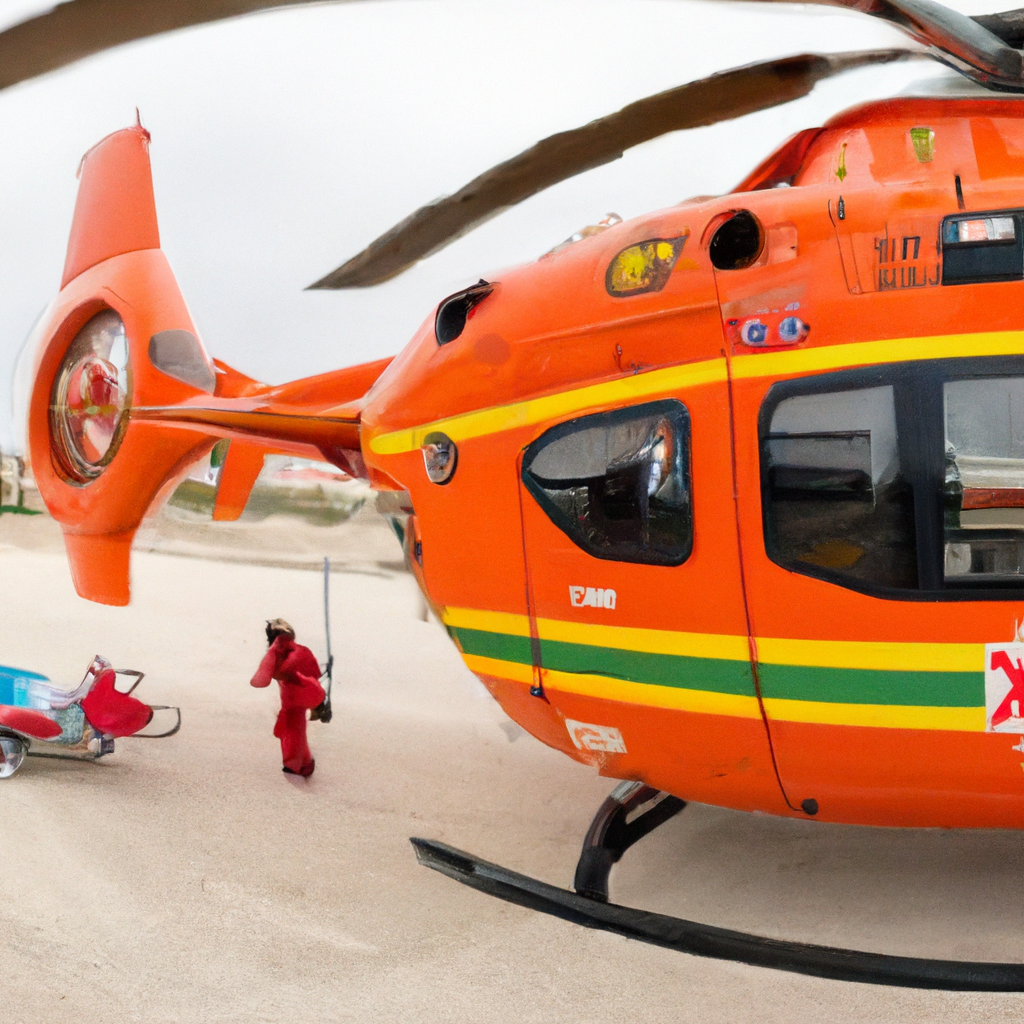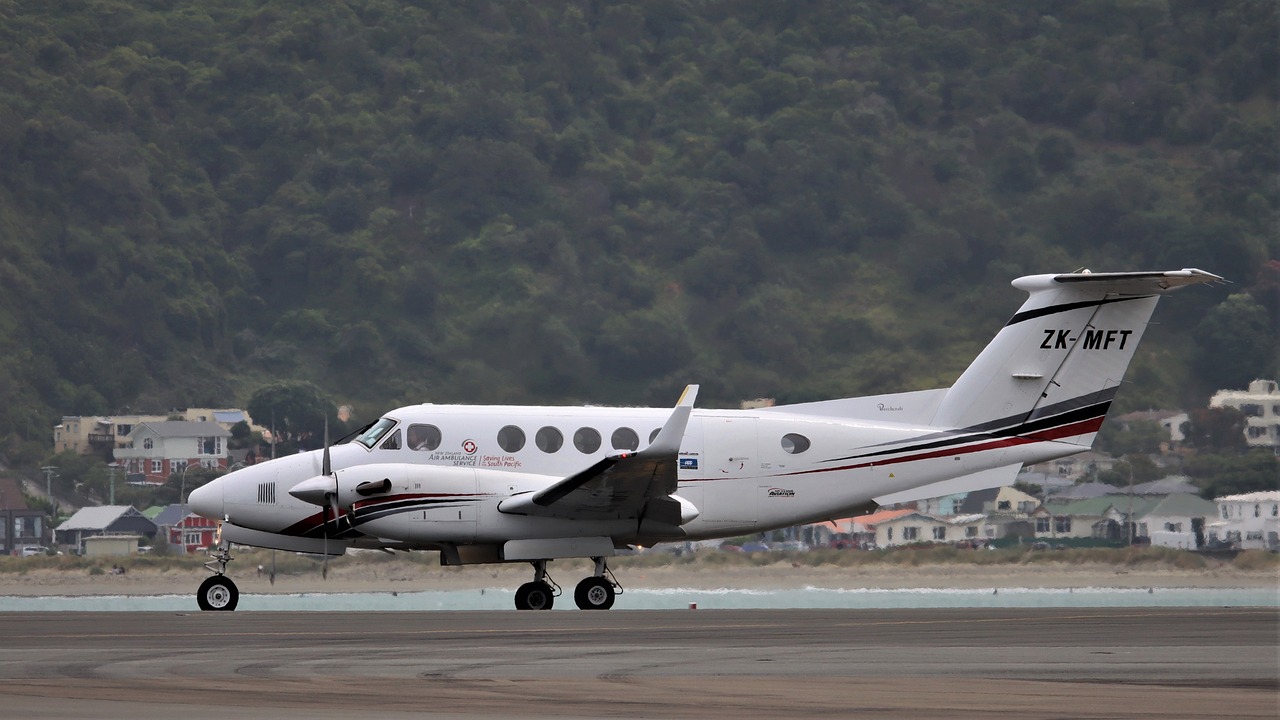So you’ve heard of air ambulances before, but did you know that there are specialized ones just for children? That’s right, pediatric air ambulances provide tailored care for little ones in need of emergency medical transport. These specially equipped helicopters and airplanes are designed to cater to the unique needs of pediatric patients, ensuring they receive the best possible care during transportation. From specialized medical equipment to trained pediatric medical staff, these air ambulances are equipped to provide the highest level of care for children in critical condition. In this article, we’ll take a closer look at what makes pediatric air ambulances so crucial for the well-being of our youngest patients.
Pediatric Air Ambulances: Tailored Care for Children
When it comes to medical emergencies involving children, time is of the essence. Pediatric air ambulances play a crucial role in providing timely and specialized care for children in need. In this article, we’ll explore what pediatric air ambulances are, when they are needed, the specialized teams involved, safety considerations, medical capabilities, airplane configuration, transportation of neonatal and infant patients, collaboration with ground medical teams, the role of communication, as well as the cost and availability of pediatric air ambulance services.

What are pediatric air ambulances?
Pediatric air ambulances are specially equipped aircraft that are specifically designed to provide medical transportation for children in need. These air ambulances are staffed with highly trained medical professionals and equipped with pediatric-specific medical equipment and medications. The primary purpose of pediatric air ambulances is to ensure that critically ill or injured children receive the necessary medical care and reach the appropriate medical facility as quickly as possible.
Pediatric air ambulances differ from adult air ambulances in several ways. Firstly, the medical equipment and medications carried on board are tailored to meet the specific needs of children. Additionally, the interior of the aircraft is designed to provide a child-friendly environment, ensuring their comfort and safety during transport.
When are pediatric air ambulances needed?
Pediatric air ambulances are needed in two main situations. The first is during medical emergencies that require immediate transportation to a medical facility. Examples of such emergencies include severe trauma, cardiac arrest, respiratory distress, or any condition where time is critical for the child’s survival.
The second scenario is when a child requires specialized treatment that is only available at a specific medical facility. This can include cases where a child needs surgery, organ transplantation, or other specialized interventions that are not available locally. In these situations, pediatric air ambulances ensure that the child can access the necessary care in a timely manner.
A specialized team for pediatric air ambulances
Pediatric air ambulances are staffed with highly trained medical professionals who specialize in providing care for children during transport. These professionals often include doctors, nurses, respiratory therapists, and paramedics who have received specialized training in pediatric critical care. Their expertise is crucial in providing the necessary medical support and interventions during the flight.
In addition to the medical staff, pediatric air ambulances also offer emotional support to families. The transport of a sick or injured child can be an incredibly stressful and emotional experience for parents. The specialized team on board provides comfort, reassurance, and information to help alleviate the concerns of the families during the journey.
Safety considerations for pediatric air ambulances
Ensuring the safety of children during air transport is a top priority for pediatric air ambulances. These aircraft are equipped with age-appropriate restraints and safety measures to secure the child during the flight. Proper restraint systems are used to secure infants, toddlers, and older children, preventing any potential injuries during turbulence or abrupt maneuvers.
For neonatal and infant patients, specialized equipment is available on board the aircraft. Incubators provide a controlled and stable environment for premature babies, and climate control systems help maintain their body temperature. Continuous monitoring equipment ensures that the newborn’s vital signs are closely monitored throughout the flight.

Medical capabilities of pediatric air ambulances
Pediatric air ambulances are equipped with advanced life support systems to provide comprehensive medical care during the flight. These include equipment for airway management, ventilation support, cardiac monitoring, and intravenous medication administration. The medical professionals on board have the expertise to manage a wide range of pediatric emergencies, including respiratory distress, cardiac arrest, seizures, and severe trauma.
In addition to basic life support, pediatric air ambulances are equipped to provide specialized treatments and interventions. This can include administering specialized medications, managing complex medical equipment, and performing procedures specific to pediatric patients. The goal is to ensure that the child receives the same level of care during transport as they would in a hospital setting.
Airplane configuration for pediatric air ambulances
The interior design of pediatric air ambulances is tailored to provide a child-friendly environment. The seating area is designed to be comfortable, with age-appropriate seating options that accommodate children of different ages and sizes. The cabin is brightly colored and filled with distractions such as toys and videos to help alleviate anxiety and keep children engaged.
The placement and accessibility of medical equipment are carefully considered. Emergency equipment and medications are readily available, organized, and labeled clearly for easy access during emergencies. The strategic placement of equipment ensures that medical professionals can provide efficient care without compromising the safety or comfort of the child.
Transporting neonatal and infant patients
Transporting neonatal and infant patients requires additional considerations due to their unique medical needs. Pediatric air ambulances are equipped with incubators that provide a controlled environment for premature babies, protecting them from fluctuations in temperature and providing a sterile space. Specialized climate control systems ensure that the incubator maintains a stable and safe temperature for the newborn.
Neonatal medical equipment, such as monitoring devices, intravenous lines, and specialized respiratory support, is readily available on board. The medical professionals overseeing the transport have the necessary skills and experience to manage the care of these delicate patients throughout the flight.
Collaboration with ground medical teams
Pediatric air ambulances work in close coordination with hospitals and emergency services on the ground. Communication between the air ambulance team and the referring physicians is essential to ensure a smooth and seamless transition of care. The ground medical team provides critical information about the child’s condition and medical history, which enables the air ambulance team to prepare appropriately for the journey and provide the necessary interventions during transport.
Upon arrival at the receiving medical facility, communication is established to ensure a seamless transfer of care. The medical professionals on board the air ambulance provide a detailed handover to the receiving team, sharing important clinical information and treatment provided during the flight. This collaboration ensures continuity of care and allows for immediate attention and treatment upon arrival.
The role of communication in pediatric air ambulances
Effective communication is vital for the success of pediatric air ambulance missions. The air ambulance team communicates with the referring physicians to gather critical information about the patient’s condition, medical history, and any ongoing treatments. This information helps the team prepare appropriately for the flight, ensuring that they have the necessary equipment, medications, and expertise to provide the best care possible.
Additionally, communication with the receiving medical facilities allows the air ambulance team to provide updates on the patient’s condition, ensuring that the medical staff at the receiving facility are adequately prepared to continue the necessary treatments upon arrival. Clear communication channels between all involved parties are crucial for seamless collaboration and the best possible outcome for the patient.
Cost and availability of pediatric air ambulance services
The cost of pediatric air ambulance services can vary depending on factors such as distance traveled, the complexity of the medical condition, and the specific services required. In many cases, these services are covered by insurance, but it is essential to check with the insurance provider regarding coverage and any potential financial responsibilities.
Regional availability and accessibility of pediatric air ambulance services can also vary. In larger urban areas, there may be multiple providers, while more remote or rural areas may have limited access to these specialized services. It is crucial to be aware of the availability of pediatric air ambulance services in your area and have a plan in place in case the need arises.
Conclusion
Pediatric air ambulances play an integral role in ensuring that children in medical need receive timely and specialized care. These specially equipped aircraft, staffed with highly trained medical professionals, provide a safe and efficient means of transportation for critically ill or injured children. With their pediatric-specific equipment, medical capabilities, and collaboration with ground medical teams, pediatric air ambulances are dedicated to delivering tailored care for children when every second counts.



